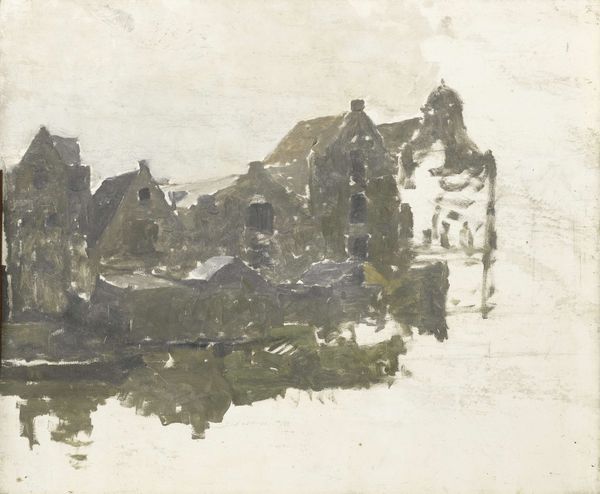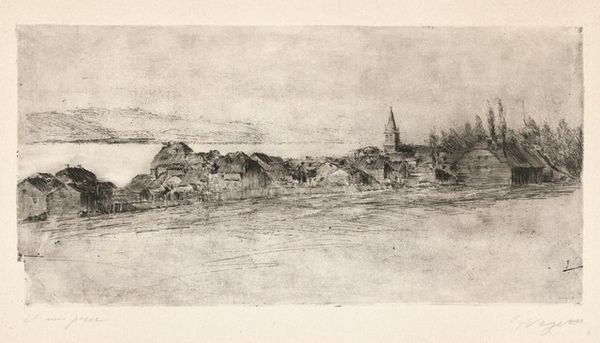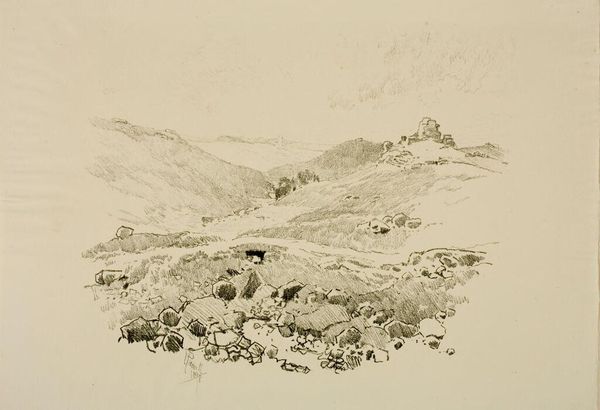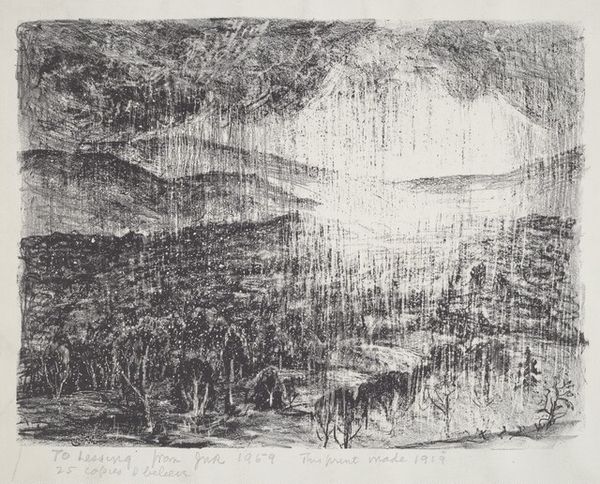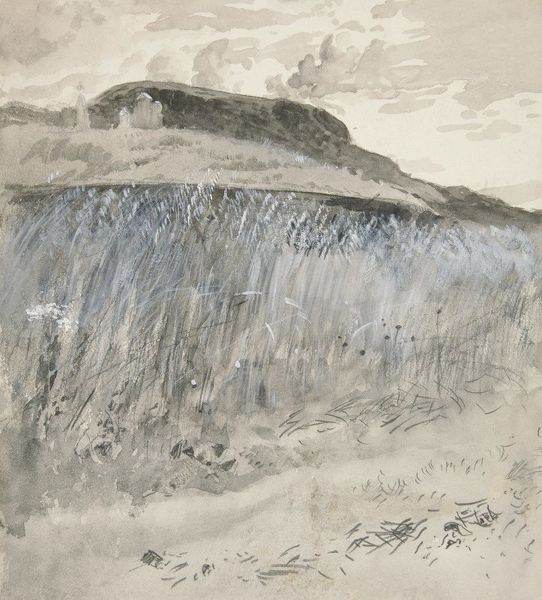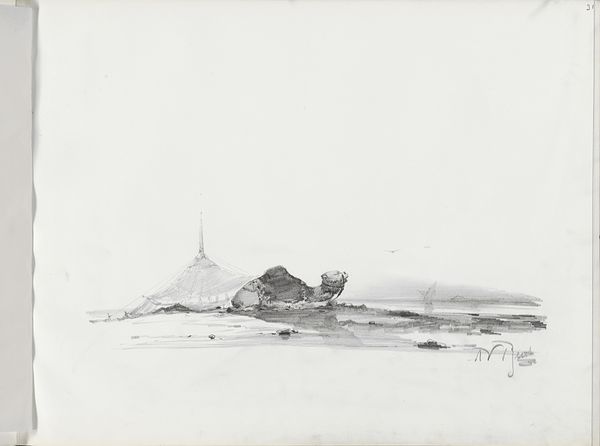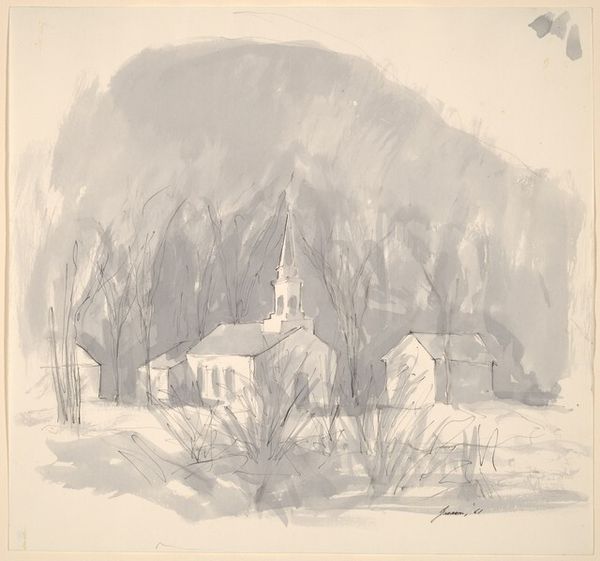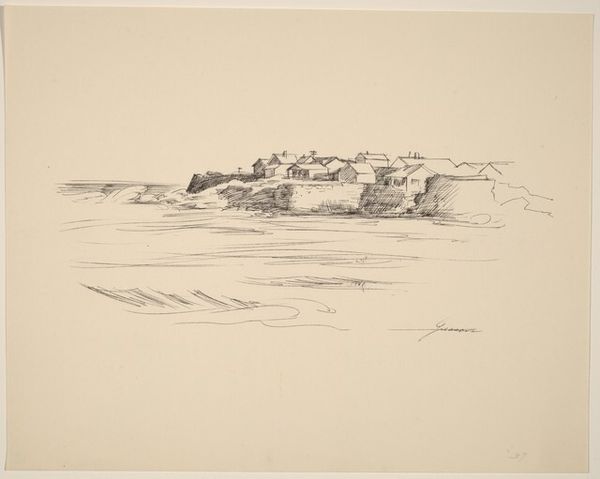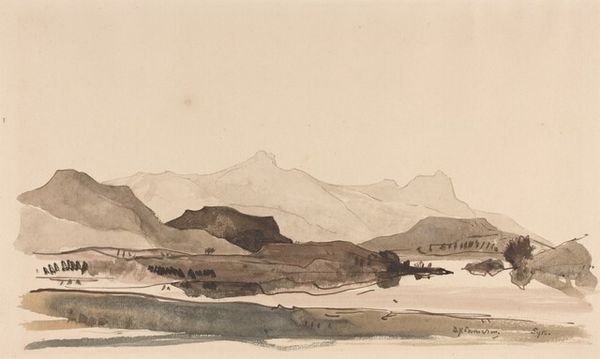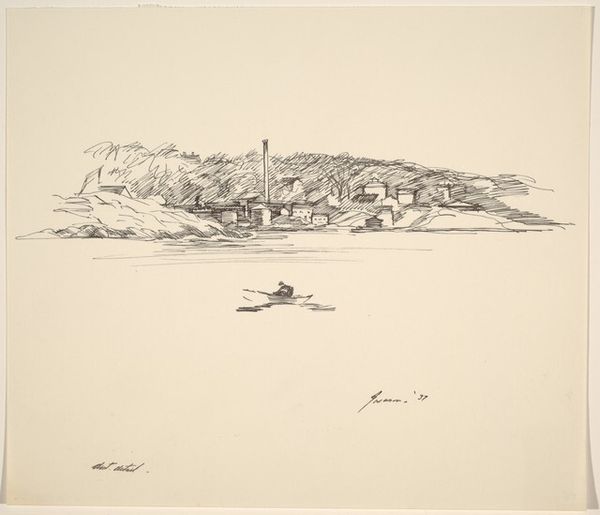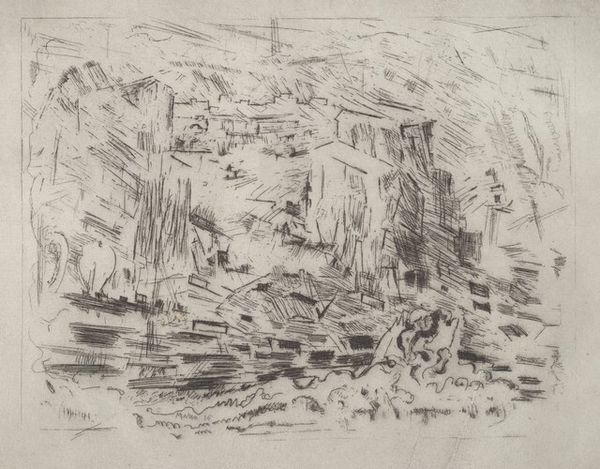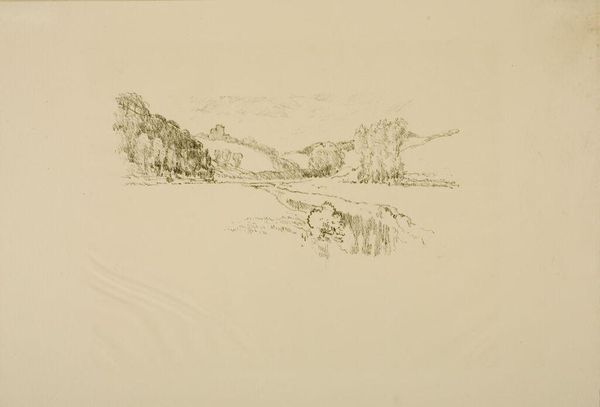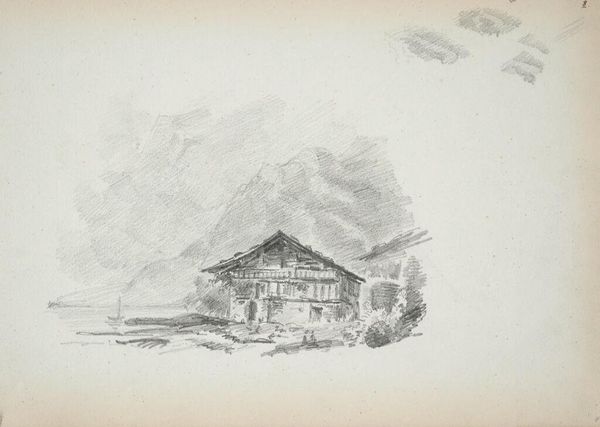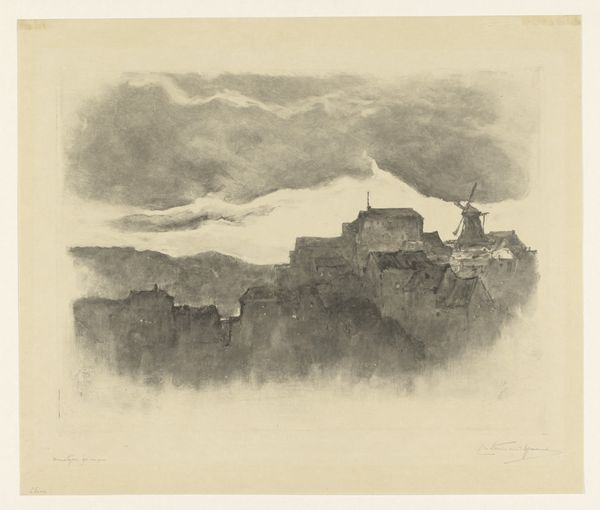
drawing, print, etching, pencil
#
drawing
# print
#
etching
#
pencil sketch
#
landscape
#
etching
#
pencil
Dimensions: image (irregular): 19.05 × 24.77 cm (7 1/2 × 9 3/4 in.) sheet: 24.45 × 31.75 cm (9 5/8 × 12 1/2 in.)
Copyright: National Gallery of Art: CC0 1.0
Editor: We're looking at Percy Albee's "Streaking Clouds," an etching and pencil drawing from around the 1920s. I'm really struck by the contrast – the dark, almost ominous sky hanging over this serene little village reflected in the water. What draws your attention in this piece? Curator: The stark duality between the textures and the shapes interests me, creating a narrative tension. Note the sky rendered with an almost frenetic energy compared to the more carefully delineated architecture below. This dissonance compels the viewer to consider the surface and its constitutive elements. How do the visual components create the mood? Editor: I think it's the difference in mark-making. The sky feels so loose and expressive, almost abstract, while the village is more defined and realistic, which gives it the overall mood of the sublime. It makes me wonder if the reflections are meant to calm the drama created by the contrast between the ominous and more precise representations. Do you read any structural components beyond this representational tension? Curator: Yes, indeed. If one removes the element of representation, one finds oneself looking at varying arrangements of lines and tonalities within a frame, almost entirely arranged on horizontal coordinates, and whose main counterpoint is achieved by their distribution between top and bottom, as opposed to lateral orientations. If the artist were more concerned with representation than semiotics, do you not think the tower would be more orthogonal? Editor: That's fascinating, I had only been concerned with what was represented as opposed to the forms through which they are made. This piece definitely invites more thought than initially perceived! Curator: Exactly, seeing beyond immediate impressions allows a deeper exploration of visual language and intent.
Comments
No comments
Be the first to comment and join the conversation on the ultimate creative platform.
